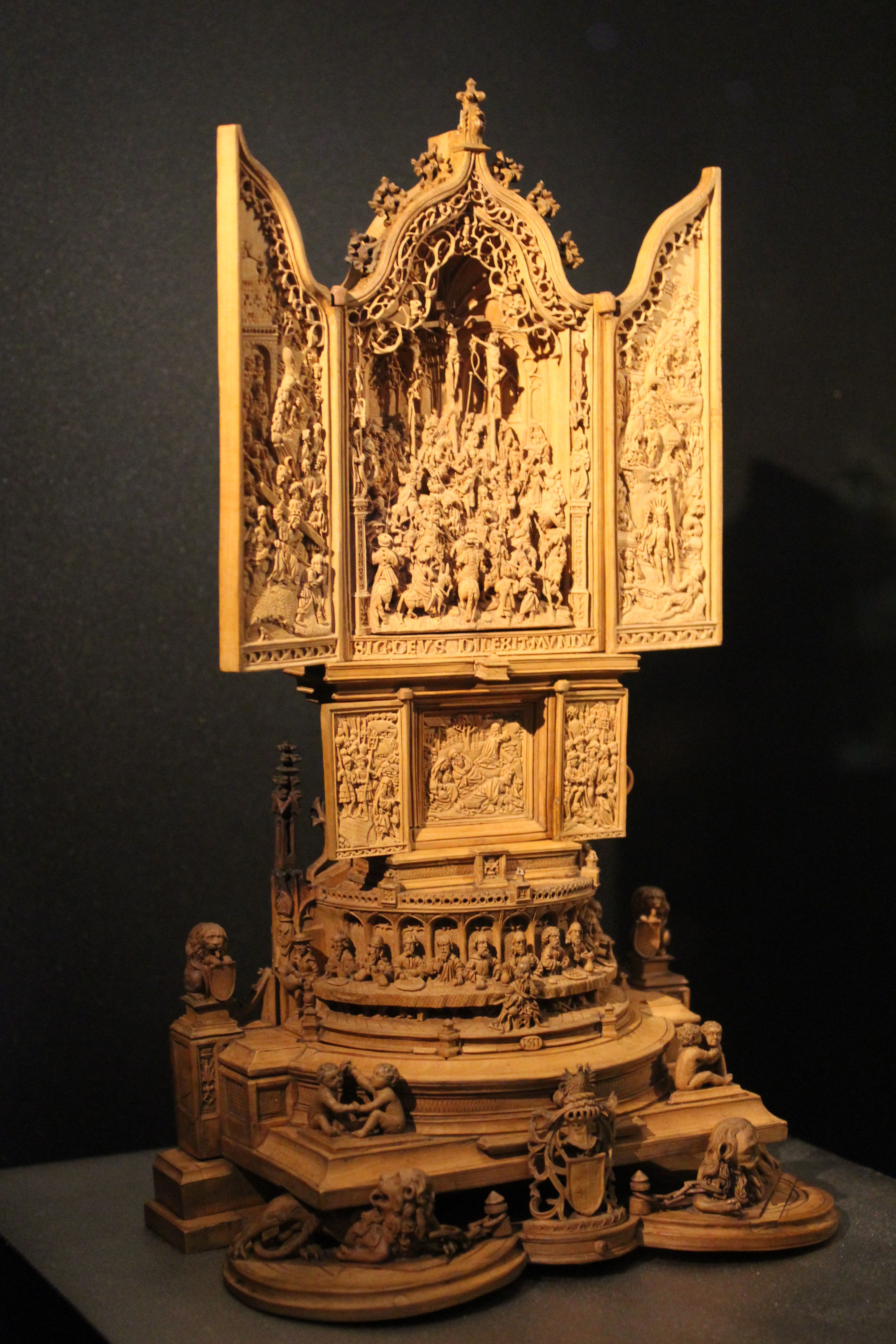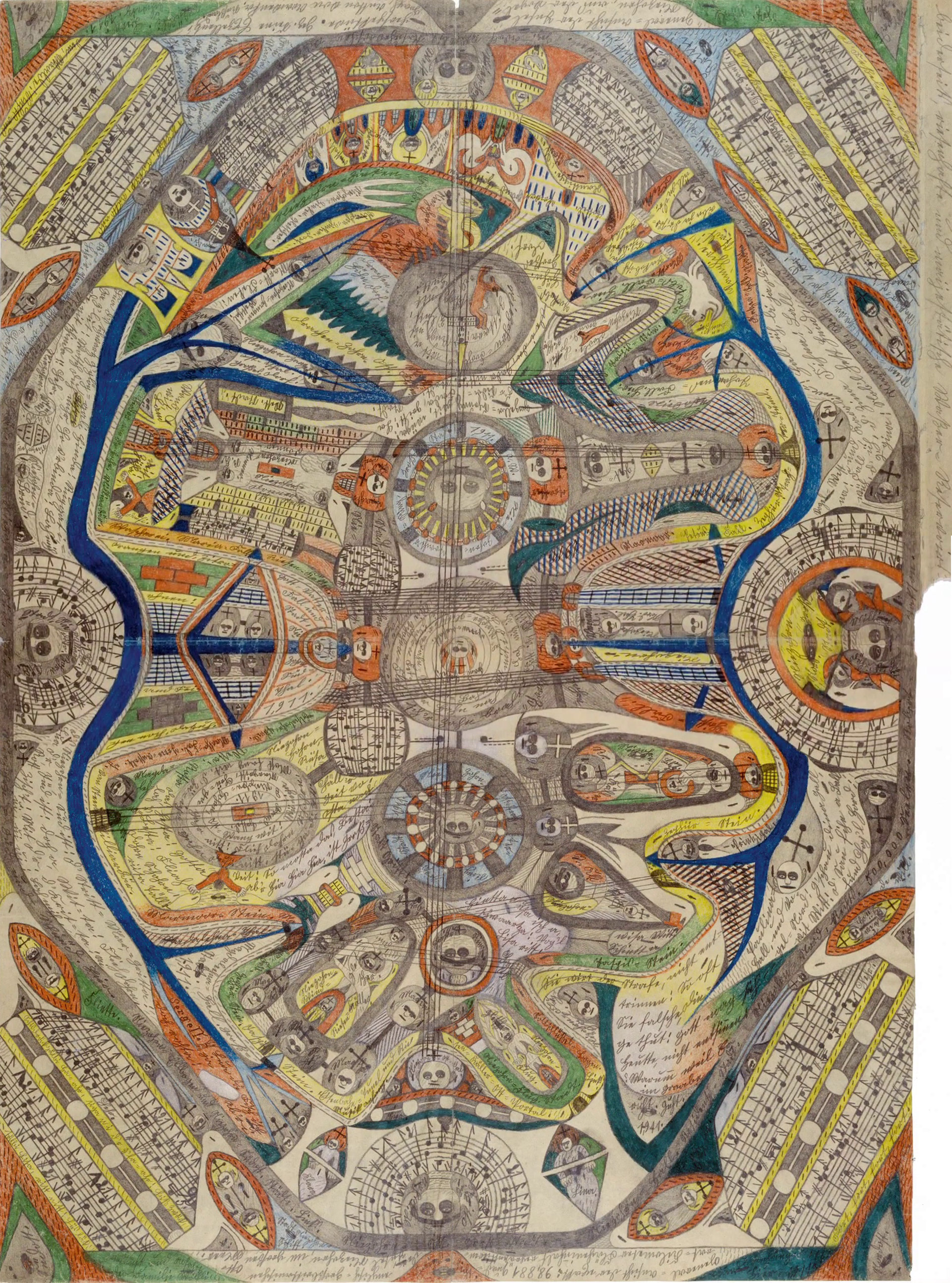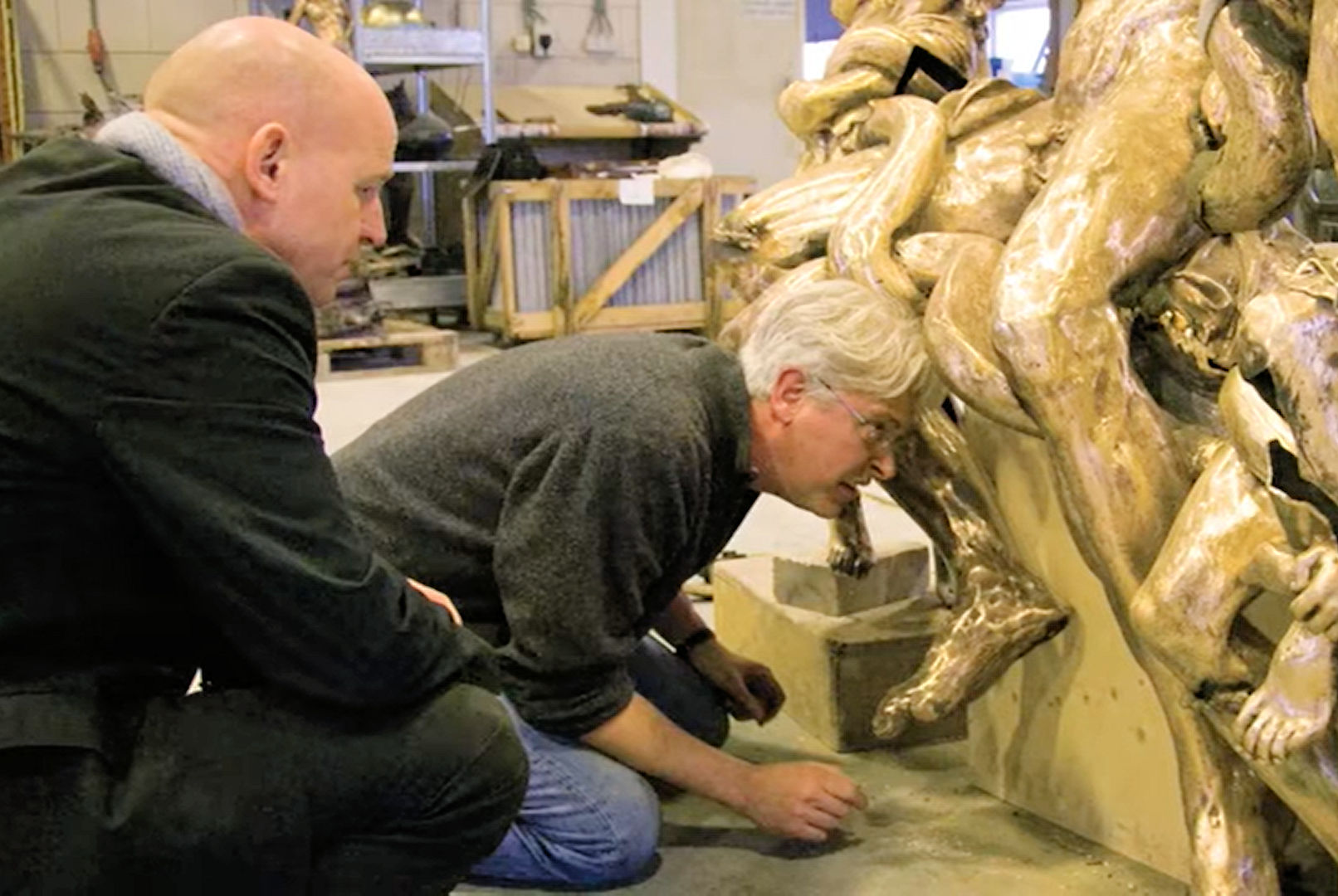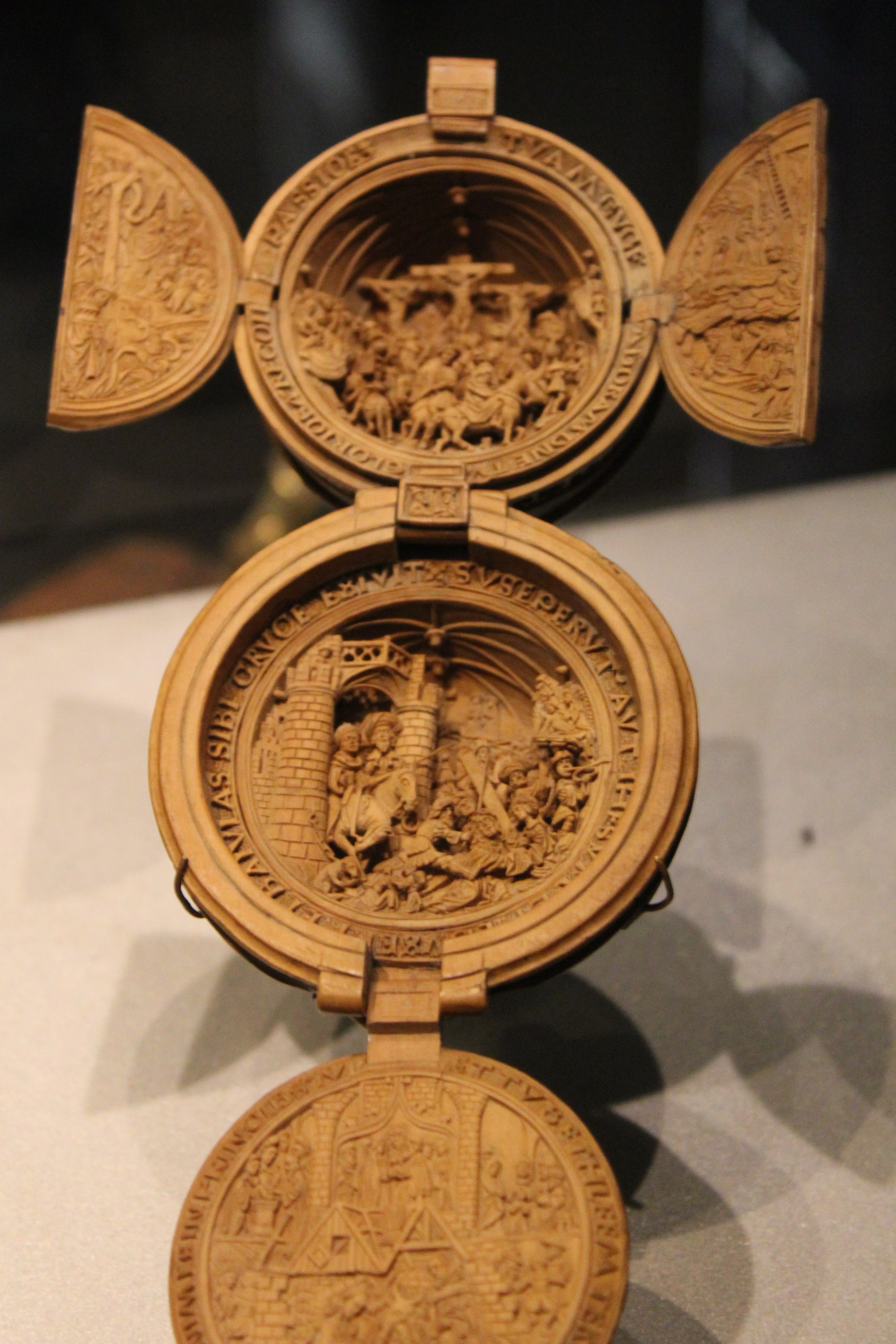|
Adam Dircksz
Adam Dircksz (active 1500–1530) is the name ascribed by some art historians to a highly influential Dutch sculptor whose workshop is often attributed with the creation of around 60 of the c. 150 extant Gothic boxwood miniature micro-carvings. Other historians prefer to attribute various unrelated artists who are given individual or grouped notnames. It may be that the master was the innovator in this style of sculpture, and that similar works were directly inspired. According to the British Museum, Dircksz may have served "elite patrons in the circle of the Holy Roman Emperor Charles V, with a strong link to Delft." Almost nothing is known about his life, except from some dates and signatures left on carvings, which indicate only that he was associated with the art works, the real life person may have been a woodcutter, sculptor, medallist, or a patron. [...More Info...] [...Related Items...] OR: [Wikipedia] [Google] [Baidu] |
Boxwood Altarpiece, 1511
''Buxus'' is a genus of about seventy species in the family Buxaceae. Common names include box or boxwood. The boxes are native to western and southern Europe, southwest, southern and eastern Asia, Africa, Madagascar, northernmost South America, Central America, Mexico and the Caribbean, with the majority of species being tropical or subtropical; only the European and some Asian species are frost-tolerant. Centres of diversity occur in Cuba (about 30 species), China (17 species) and Madagascar (9 species). They are slow-growing evergreen shrubs and small trees, growing to 2–12 m (rarely 15 m) tall. The leaves are opposite, rounded to lanceolate, and leathery; they are small in most species, typically 1.5–5 cm long and 0.3–2.5 cm broad, but up to 11 cm long and 5 cm broad in ''B. macrocarpa''. The flowers are small and yellow-green, monoecious with both sexes present on a plant. The fruit is a small capsule 0.5–1.5 cm long (to 3 cm in ... [...More Info...] [...Related Items...] OR: [Wikipedia] [Google] [Baidu] |
Horror Vacui (art)
In visual art, horror vacui (, ; ), also referred to as kenophobia (from ), is the filling of the entire surface of a space or an artwork with detail. In physics, '' horror vacui'' reflects Aristotle's idea that "nature abhors an empty space." Origins Italian art critic and scholar Mario Praz used this term to describe the excessive use of ornament in design during the Victorian age. Other examples of horror vacui can be seen in the densely decorated carpet pages of Insular illuminated manuscripts, where intricate patterns and interwoven symbols may have served "''apotropaic'' as well as decorative functions." The interest in meticulously filling empty spaces is also reflected in Arabesque decoration in Islamic art from ancient times to present. The art historian Ernst Gombrich theorized that such highly ornamented patterns can function like a picture frame for sacred images and spaces. "The richer the elements of the frame," Gombrich wrote,"the more the centre will gain in dig ... [...More Info...] [...Related Items...] OR: [Wikipedia] [Google] [Baidu] |
Alexandra Suda
Alexandra Suda (born 1981) is a Canadian art historian who was formerly the director of the National Gallery of Canada.Minister Rodriguez Announces Appointment of New Director of National Gallery of Canada . Retrieved 13 February 2019 In 2022, she was appointed the director of the . Ea ...
|
Rijksmuseum
The Rijksmuseum () is the national museum of the Netherlands dedicated to Dutch arts and history and is located in Amsterdam. The museum is located at the Museum Square in the borough of Amsterdam South, close to the Van Gogh Museum, the Stedelijk Museum Amsterdam, and the Concertgebouw. The Rijksmuseum was founded in The Hague on 19 November 1798 and moved to Amsterdam in 1808, where it was first located in the Royal Palace and later in the Trippenhuis. The current main building was designed by Pierre Cuypers and first opened in 1885.The renovation Rijksmuseum. Retrieved on 4 April 2013. On 13 April 2013, after a ten-year renovation which cost 375 million, the main building was reopened by |
Metropolitan Museum Of Art
The Metropolitan Museum of Art of New York City, colloquially "the Met", is the largest art museum in the Americas. Its permanent collection contains over two million works, divided among 17 curatorial departments. The main building at 1000 Fifth Avenue, along the Museum Mile on the eastern edge of Central Park on Manhattan's Upper East Side, is by area one of the world's largest art museums. The first portion of the approximately building was built in 1880. A much smaller second location, The Cloisters at Fort Tryon Park in Upper Manhattan, contains an extensive collection of art, architecture, and artifacts from medieval Europe. The Metropolitan Museum of Art was founded in 1870 with its mission to bring art and art education to the American people. The museum's permanent collection consists of works of art from classical antiquity and ancient Egypt, paintings, and sculptures from nearly all the European masters, and an extensive collection of American and modern ... [...More Info...] [...Related Items...] OR: [Wikipedia] [Google] [Baidu] |
Creatio Ex Nihilo
(Latin for "creation out of nothing") is the doctrine that matter is not eternal but had to be created by some divine creative act. It is a theistic answer to the question of how the universe comes to exist. It is in contrast to ''Ex nihilo nihil fit'' or "nothing comes from nothing", which means that all things were formed from preexisting things; an idea by the Greek philosopher Parmenides (c.540-480 BC) about the nature of all things, and later more formally stated by Titus Lucretius Carus (c. 99 – c. 55 BC) Theology ''Ex nihilo nihil fit'': uncreated matter ''Ex nihilo nihil fit'' means that nothing comes from nothing. In ancient creation myths the universe is formed from eternal formless matter, namely the dark and still primordial ocean of chaos (cosmogony), chaos. In Sumerian myth this cosmic ocean is personified as the goddess Nammu "who gave birth to heaven and earth" and had existed forever; in the Babylonian creation epic Enuma Elish pre-existent chaos is made up ... [...More Info...] [...Related Items...] OR: [Wikipedia] [Google] [Baidu] |
Frits Scholten
Frits Scholten (born 1959 in Hengelo, Netherlands) is a Dutch art historian specialising in art of the Netherlands from the late Middle Ages until 1800, and sculpture from the 15th to 19th centuries. Currently he is Head of Department of Sculpture and the Rijksmuseum in Amsterdam. . CODART. Retrieved 9 October 2018 Previously he was senior curator of sculpture at the from 1993, prior to which he worked at the . [...More Info...] [...Related Items...] OR: [Wikipedia] [Google] [Baidu] |
Statens Museum
The National Gallery of Denmark ( da, Statens Museum for Kunst, also known as "SMK", literally State Museum for Art) is the Danish national gallery, located in the centre of Copenhagen. The museum collects, registers, maintains, researches and handles Danish and foreign art dating from the 14th century to the present day. Collections The museum's collections constitute almost 9,000 paintings and sculptures, approximately 240,000 works of art on paper as well as more than 2,600 plaster casts of figures from ancient times, the middle-ages and the Renaissance. Most of the older objects come from the Danish royal collection. Approximately 40,000 pieces from the collections are expected to be made available online by 2020. European Art 1300–1800 The display of European Art 1300–1800 is a comprehensive collection of art over the 500-year period, featuring works by Mantegna, Cranach, Titian, Rubens and Rembrandt. The art is spread over thirteen rooms, and is the oldest a ... [...More Info...] [...Related Items...] OR: [Wikipedia] [Google] [Baidu] |
Prayer Nut
Prayer nuts or Prayer beads (Dutch language, Dutch: ''Gebedsnoot'') are very small 16th century small Gothic boxwood miniature sculptures, mostly originating from the north of today's Holland. They are typically detachable and open into halves of highly detailed and intricate Christian religious scenes. Their size varies between the size of a walnut and a golf ball. They are mostly the same shape, decorated with carved openwork Gothic tracery and flower heads.Braimbridge, Mark.The Waddesdon Bequest At The British Museum Part 1. ''Topiarius'', Volume 14, Summer 2010. pp. 15–17. Retrieved 25 February 2017 Most are 2–5 cm in diameter and designed so they could be held in the palm of a hand during personal devotion or hung from necklaces or belts as fashionable accessories. Prayer nuts often contain central scenes depicting episodes from the life of Mary, mother of Jesus, Mary or the Passion of Jesus.Ellis; Suda (2016), p. 80 Some are single beads; more rare examples consist ... [...More Info...] [...Related Items...] OR: [Wikipedia] [Google] [Baidu] |
North Brabant
North Brabant ( nl, Noord-Brabant ; Brabantian: ; ), also unofficially called Brabant, is a province in the south of the Netherlands. It borders the provinces of South Holland and Gelderland to the north, Limburg to the east, Zeeland to the west, and the Flemish provinces of Antwerp and Limburg to the south. The northern border follows the Meuse westward to its mouth in the Hollands Diep strait, part of the Rhine–Meuse–Scheldt delta. North Brabant has a population of 2,562,566 as of November 2019. Major cities in North Brabant are Eindhoven (pop. 231,642), Tilburg (pop. 217,259), Breda (pop. 183,873) and its provincial capital 's-Hertogenbosch (pop. 154,205). History The Duchy of Brabant was a state of the Holy Roman Empire established in 1183 or 1190. It developed from the Landgraviate of Brabant and formed the heart of the historic Low Countries, part of the Burgundian Netherlands from 1430 and of the Habsburg Netherlands from 1482, until it was split up after th ... [...More Info...] [...Related Items...] OR: [Wikipedia] [Google] [Baidu] |
Art Historians
The history of art focuses on objects made by humans for any number of spiritual, narrative, philosophical, symbolic, conceptual, documentary, decorative, and even functional and other purposes, but with a primary emphasis on its aesthetic visual form. Visual art can be classified in diverse ways, such as separating fine arts from applied arts; inclusively focusing on human creativity; or focusing on different media such as architecture, sculpture, painting, film, photography, and graphic arts. In recent years, technological advances have led to video art, computer art, performance art, animation, television, and videogames. The history of art is often told as a chronology of masterpieces created during each civilization. It can thus be framed as a story of high culture, epitomized by the Wonders of the World. On the other hand, vernacular art expressions can also be integrated into art historical narratives, referred to as folk arts or craft. The more closely that an art hist ... [...More Info...] [...Related Items...] OR: [Wikipedia] [Google] [Baidu] |





.jpg)



.jpg)